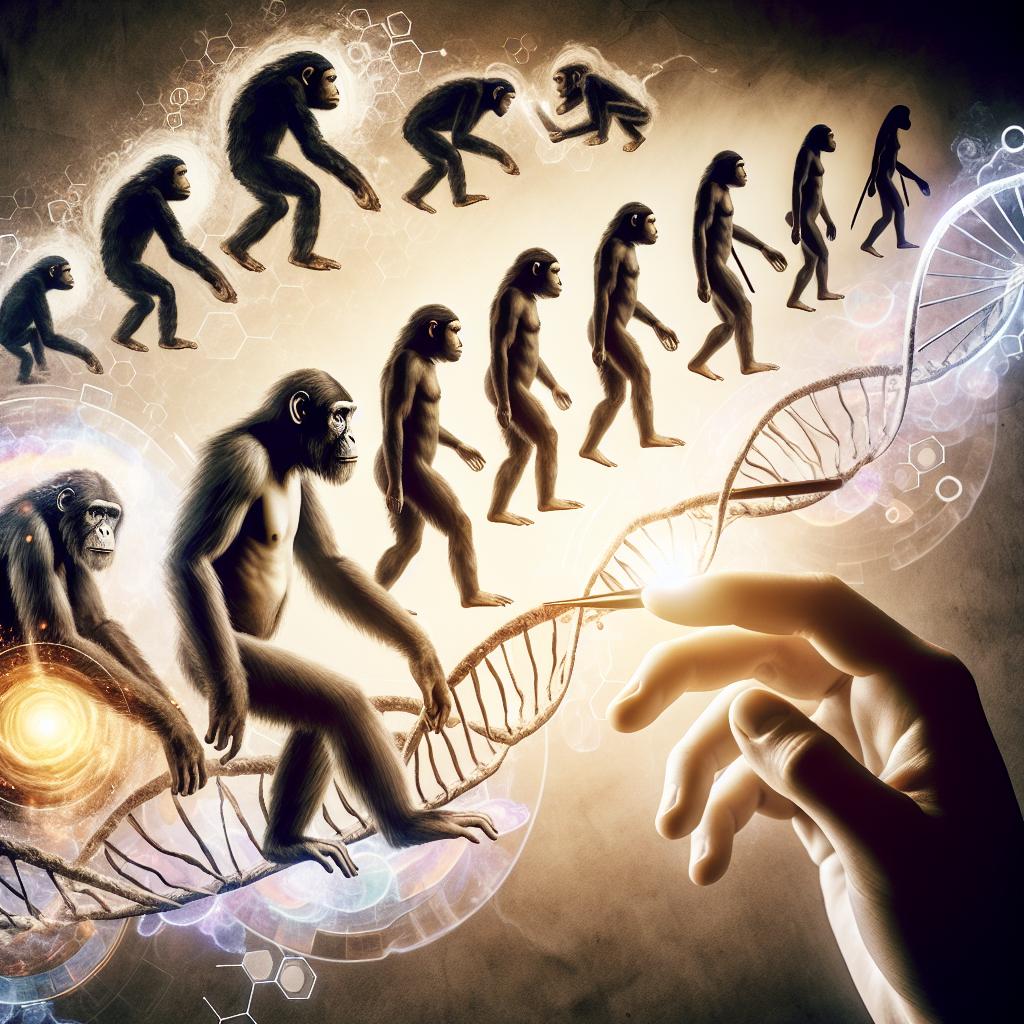
Unveiling the Divine Purpose: Genetic Meltdown Theory Crisis Explained
Published: 22 July 2024
From Ape to Man via Genetic Meltdown: A Theory in Crisis
In this article, we will explore the idea that the theory of evolution is in crisis. We will discuss the book "Genetic Entropy & The Mystery of the Genome" by John C. Sanford, which challenges the widely accepted notion that mutations and natural selection have led to the development of complex life forms. While this topic is controversial, it is important to have open and honest discussions about scientific theories and their implications.
Mutations and Degradation
One of the main arguments presented in Sanford's book is that mutations, rather than leading to the development of new information and complexity, actually result in degradation or complete destruction of function. Sanford argues that after decades of research, no unambiguous examples of mutations creating new information have been found. This challenges the idea that random mutations can drive the process of evolution.
Sanford also highlights the high mutation rates in human reproductive cells, which are estimated to be around 100-300 mutations per individual each generation. These mutations, along with other types such as deletions and duplications, contribute to the overall degradation of genetic information. This raises questions about the ability of natural selection to preserve and enhance functional genetic material over time.
Junk DNA or Masterpiece?
Another key point raised by Sanford is the misconception surrounding so-called "junk DNA." While it was once believed that a large portion of the genome was non-functional, recent research suggests otherwise. The genome is now known to be full of complex regulatory networks and intricate metabolic pathways. This challenges the notion that most of our genetic material is meaningless evolutionary relics.
Sanford argues that we should approach the study of genomes with humility and recognize that there is still much we don't understand. The idea that organisms are driven by chaotic information processing systems contradicts our observations of sophisticated biological structures. Rather than dismissing large portions of DNA as junk, we should consider the possibility that they serve important functions that are yet to be fully comprehended.
The Ineffectiveness of Natural Selection
Sanford also questions the effectiveness of natural selection in driving the process of evolution. He argues that the environment cannot strongly penalize different deleterious mutations and that selection for one trait often involves thousands of different genes and millions of nucleotides. This makes it unlikely that natural selection can systematically remove harmful mutations from a population.
Furthermore, Sanford highlights the fact that most mutations are recessive, meaning they are not easily eliminated by natural selection. This, combined with the low heritability of complex traits like fitness, makes it difficult for natural selection to produce significant genetic improvements over time.
Haldane's Dilemma
Haldane's Dilemma, proposed by population geneticist J.B.S. Haldane, is another challenge to the theory of evolution. The dilemma suggests that it would take an unrealistic amount of time for a single new mutation to become fixed in a population. Even if we assume strong selection for a specific mutation, the interference from other random mutations makes it unlikely for beneficial mutations to accumulate and lead to complex organisms.
Sanford argues that this dilemma poses a significant problem for evolutionary theory. If mutation and natural selection cannot preserve existing genetic information, it becomes even more implausible to believe that billions of slight improvements have been selected gradually over time.
The Cost of Selection
Sanford also emphasizes the cost associated with natural selection. To eliminate deleterious mutations from a population, additional offspring would need to be born and sacrificed to natural selection. This is because not all individuals who live go on to have children. However, given the constraints of human reproduction rates, it is physically impossible to eliminate all mutations and still allow the population to reproduce.
Why This Matters
The debate surrounding evolution and creationism has significant implications for our understanding of the origin and development of life. It challenges deeply held beliefs about our place in the world and how we came to be. By exploring alternative perspectives, such as young-earth creationism, we can engage in critical thinking and evaluate the evidence from different angles.
Think About It
Consider the implications of Sanford's arguments for the theory of evolution. Does the evidence presented challenge your current understanding? How might this affect your views on the origin and development of life? It is important to approach scientific theories with an open mind and consider all available evidence before drawing conclusions.
Note: This article is a simplified summary of the book "Genetic Entropy & The Mystery of the Genome" by John C. Sanford. For a more in-depth exploration of the topic, please refer to the original source material.
